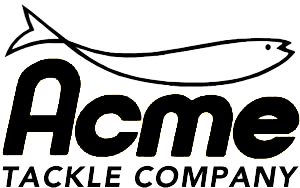Your Cart is Empty
Free Ground Shipping on U.S. orders over $50. Excludes Elliott & 2B FISHING rods.
Free Ground Shipping on U.S. orders over $50. Excludes Elliott & 2B FISHING rods.
Kastmaster Tips and Tricks for Bass Fishing
August 28, 2018 6 min read

The Acme Tackle Kastmaster fishing lure is one of the most versatile lures on the market today and definitely one that consistently helps me catch quality fish year-round.
Most people would associate a spoon-type lure with salmon and trout or even northern pike, but how many people use it for bass? There are countless jigging and casting spoons on the market today, but none like the Kastmaster. The Kastmaster is also a great “search” lure to locate fish and one of the best artificial lures that mimic baitfish.
Over the years, I have spent a lot of time fishing the Kastmaster, and it has quickly become one of my favorite lures that consistently produce high numbers of bass. The action of the Kastmaster can be manipulated and changed simply by changing the retrieval speed. A quick retrieve will result in a tighter wiggle, much like a fleeing shad or baitfish. When I see fish busting near the surface or feeding, I often cast the lure into busting fish, where it almost instantly generates a strike. When using a slower retrieve, the Kastmaster gives off more of an erratic side-to-side wobble action. Both retrieves put out a vibration and displace water, getting the attention of any feeding bass.
In addition, there are few lures that allow me to fish a baitfish style design from 1 foot of water to 100 feet or deeper and still present it in a way that triggers fish to bite.
I had always used jigging spoons and blade-style baits to help me get down to those deeper fish, but it was the Kastmaster that became my spoon of choice that has always produced best for fish laying near the bottom or those suspended feeding on baitfish once again. The Kastmaster has always been a great presentation to drop to the bottom and jig up through a school of deep fish, but getting a crankbait down to depths exceeding 20 to 30 feet is quite difficult. It used to be these deep-suspending fish under baitfish that were the most difficult for me to catch. I started to experiment with cast and retrieve presentations, and over time, I was able to not only catch these fish below the boat but also locate and catch those I did not see with my casting presentations. Here are some of my favorite colors and more specifics on my technique.
Kastmaster Colors and Equipment:
My personal favorite Kastmaster lures of choice are the ½ ounce Chrome or Gold, and also the Chrome/Neon Blue.
When fishing clear water, I prefer chrome as it mimics shad and small baitfish perfectly. Bass can easily locate the lure as it gives off a ton of flash, especially in deep water where there is lower light penetration. It’s also in these same conditions I experiment with the chrome/blue to see if this color produces better. When I have stained to dirty water or low light conditions, gold is preferred as it gives off more flash and is easier for Bass to see.
Depending on the depth of the water, I will experiment with the rate of fall and perhaps drop down to a 3/8 or go up a size to 3/4. Once again, the ½ ounce Kastmaster seems to be the perfect size and rate of fall that triggers most strikes. I am always paying attention to the surface of the water to see if I can see any moving baitfish or even an injured or dead shad that may give me an indication of the size that I need to match.
Selecting the right gear is also important, as this will help you maximize the action and presentation of your Kastmaster. It all depends on the cover you are fishing, but most of the time, I am either dropping on the fish vertically or casting in open water. There are many times when I have to fish near flooded timber or brush, and the Kastmaster is surprisingly snag-proof. If you hang up, a quick snap or shake of the rod usually will set your Kastmaster free.
Bass Fishing Gear set up:
My choice is a 7” medium power with fast action rod. I rig my spinning reel with 20lb Seaguar Smackdown Braid with a 6 “ft fluorocarbon leader of 10lb Seaguar Invizx. The braid will help avoid line twists and is extremely sensitive in helping detect the slightest strikes or when a fish takes the Kastmaster on the fall. Last, I attach the Kastmaster to a 12 -20lb test ball-bearing snap swivel, which helps further prevent any line twist and allows for the best action.
There are several reasons I chose this setup over a baitcasting rod and reel. First, the ability to make super long casts is critical for covering water, and the small diameter of the line allows for the least resistance in the water upon retrieval. The smaller diameter has less drag in the water, allowing the Kastmaster to fall in the most natural presentation and quickly get to the strike zone depth desired. The spinning rod gives you enough power for solid hook sets and fast enough action to where the fish can fight back without tossing the hook.
How to work the Kastmaster:
When fishing vertically, simply open the bail, dropping the Kastmaster to the bottom. Watch your line for any sudden jumps or if you notice the line stops before making its way to the lake floor. As your Kastmaster flutters down, it’s not uncommon for a Bass to intercept before it hits bottom. Once it makes its way to the bottom, I like to reel up the slack, keeping the rod tip close to the water. It’s at this point where a quick upward snap of the rod in a repeated motion works best. Be sure to always follow your slack line with the rod tip back to the water. One of the most common mistakes I see is a snap of the rod lifting the Kastmaster 3 to 4 feet off the bottom and then an immediate drop of rod tip without slowly following the line back to the bottom. Strikes always occur on the fall after snapping the rod, so too much line or slack will prevent you from feeling the bite. Your quick reaction time is critical when vertical jigging. You may experiment with a quick snap to a nice slow lift and drop technique to find which gets the best response.
When I notice active or feeding fish visually or on my fish locator, I work the water column with a different set of retrieves.
Upon casting…allow the lure to free fall to the bottom. I give one quick snap or pump off the bottom or a sweep of the rod, as this is when a lot of strikes happen. Then repeat this 2 to 3 times immediately, followed by a slow steady retrieve, keeping the rod tip down close to the water. During my steady retrieve to the boat, I give a quick snap of the rod and a 1 to 2-second pause, allowing Kastmaster to flutter for a moment before continuing my retrieve. I will normally do this 3 to 4 times during a cast. This cadence will usually give you a good idea as to what the key zone is the fish are feeding, and should they be following the lure, it's immediately after these quick snaps and flutters of the lure that trigger the strike. The second retrieve would be to repeat the cast followed by slow sweeps or pumps of the rod all the way back to the boat in a “hopping” motion as the lure comes back to you.
Most of the time, your open-water fish will not have much to wrap you around, so taking your time when reeling in the fish is critical. Keep in mind that when catching fish deeper than 28 feet, a slow retrieve is very important so that you do not bring them to the surface too quickly. This can result in nitrogen quickly expanding the swim bladder, which can lead to serious injury to vital organs or even death. If you bring a fish up too quickly, you may see the swim bladder come out of the throat or bulging eyes. Should this happen, quickly puncture the swim bladder with a needle in a term known as “Fizzing.” If done quickly and correctly, the fish will swim off unharmed and live to fight another day. Learn more about how to properly “Fizz” a fish here: https://www.bassmaster.com/slideshow/fizzing-fish-step-step-how
Having confidence in any lure is always important and key to fishing success. If you experiment with the Kastmaster using the techniques I have explained, the Kastmaster will become one of your favorites, too!
Ron Johnson
Professional Fisherman
Subscribe
Sign up to get the latest on sales, new releases and more …




